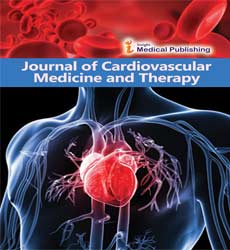Biology of Regenerative Cardiovascular Medicine
Fleur Ina *
Department of Industrial Science, Energy and Resources, Brazil
- *Corresponding Author:
- Fleur Ina
Department of Industrial Science, Energy and Resources,
Brazil,
Tel: 8240134280;
E-mail: madiosm@uab.edu
Received: February 18, 2022, Manuscript No. IPCMT-22-11510; Editor assigned: February 21, 2022, PreQC No. IPCMT-22-11510 (PQ); Reviewed: March 07, 2022, QC No. IPCMT-22-11510; Revised: March 11, 2022, Manuscript No. IPCMT-22-11510 (R); Published: March 18, 2022, DOI: 10.36648/ipcmt.22.5.1.003
Citation: Ina A (2022) Biology of Regenerative Cardiovascular Medicine. J Cardiovasc Med Ther Vol:5 No:1
Editorial
The heart is a complicated organ system with a wide range of muscle and non-muscle cells. The creation, migration and assembly of these cells into heart muscle tissue, the pacemaker and conduction system, and the coronary vasculature is a key topic in developmental biology. In the quest to understand the molecular complexity of in vivo cardio genesis, researchers have discovered a family of multi-potent cardiac progenitor cells that are closely linked. To expand, develop and eventually integrate into three-dimensional cardiac structures, these progenitors must respond to non-cell autonomous signaling stimuli. Combining tissue-engineering technology with patient-specific cardiac progenitor biology has a lot of potential for developing human cell models of disease and laying the groundwork for new regenerative cardiovascular therapy approaches.
Demographic shifts, medical technological advancements and regional issues in providing healthcare to low-density populations all pose significant difficulties to our healthcare systems. Rapid advancements in computer science and information technology will have a significant impact on the delivery of healthcare in the near future. This article discusses the benefits and drawbacks of health and telemedicine in the context of contemporary health systems, with a focus on cardiology services today. The most promising uses of e-Health and telemedicine are prevention and lifestyle interventions; chronic disease management such as hypertension, diabetes and heart failure; arrhythmia detection, such as early detection of atrial fibrillation and telemonitoring of devices like pacemakers, internal cardioverter defibrillators and implantable rhythm monitoring devices and telerehabilitation. Limited largescale evidence, particularly for cost-effectiveness, as well as lack of interoperability, weak or fragmented legal frameworks and payment are all major barriers to integrating e-Health and telemedicine into daily clinical practice. One of the most difficult challenges for those working with these new technologies will be to keep the main focus on the patient's particular requirements while also carefully evaluating the evidence.
Diabetes mellitus is a significant risk factor for increased cardiovascular disease prevalence, complexity and consequences, and diabetics make up a significant part of patients who require coronary revascularization. In this population, however both percutaneous and surgical revascularization approaches are coupled with unique obstacles. When compared to their non-diabetic counterparts, diabetics have a higher risk of restenosis and recurrent revascularization procedures after stenting. Patients with diabetes remain one of the few categories for which Percutaneous Coronary Intervention (PCI) does not yet produce a survival advantage comparable to that of coronary artery bypass surgery, with trends toward greater death rates over one year or longer following stenting. Diabetes mellitus is also linked to a higher risk of death and faster disease progression following surgical revascularization. Biometric measures of redox state are good markers for research and clinical application because of the central role of oxidative signaling in cardiovascular pathology. Despite this intriguing biological plausibility no redox biomarker is being used in clinical practice.
Open Access Journals
- Aquaculture & Veterinary Science
- Chemistry & Chemical Sciences
- Clinical Sciences
- Engineering
- General Science
- Genetics & Molecular Biology
- Health Care & Nursing
- Immunology & Microbiology
- Materials Science
- Mathematics & Physics
- Medical Sciences
- Neurology & Psychiatry
- Oncology & Cancer Science
- Pharmaceutical Sciences
